DIY Dandelion Simple Syrup
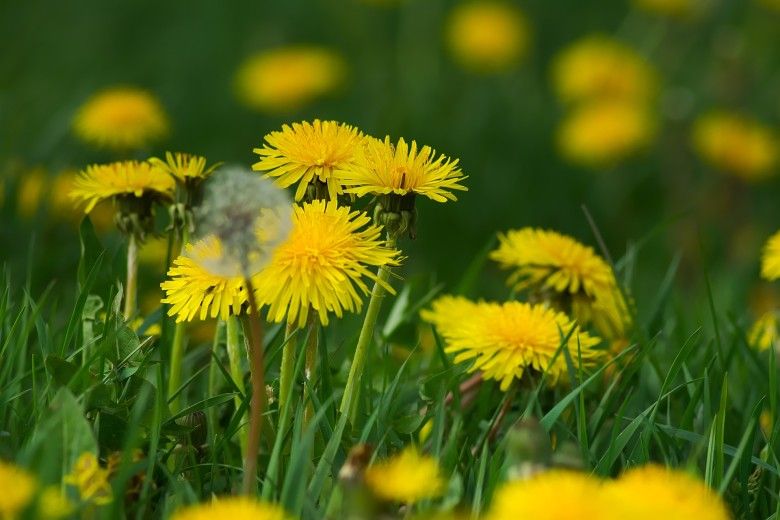
This past year has been a time when many people have taken up new hobbies and for me that has been making simple syrup from scratch. Basically, a simple syrup is nothing more than water and sugar—however, you can get really creative with that basic base and add loads of other flavors. When they are finished, simple syrups can then be added to coffee, tea, cocktails, mocktails, and even used as a topper for waffles or pancakes! They are fun and easy to make and not fussy at all which is why I like making them so much.
While many folks consider dandelions just “some awful weed” and try everything they can to get them out of their yards, I happen to love them. Every part of a dandelion is edible which is fascinating to me. They are also said to have amazing health benefits. Armed with this knowledge and a yard covered in the pretty yellow flowers, I decided to make a Dandelion Simple Syrup!
Ingredients:
- A few cups of dandelion heads (the more you pick, the more syrup you make)
- Filtered water
- Pure cane sugar
- Fresh squeezed lemon juice (optional)
Tools:
- Large pot with a lid
- Measuring cups
- Cheese cloth or fine mesh strainer
- Glass container(s) for storage of syrup
- Gloves (optional)
- Kitchen shears (optional)
Directions:
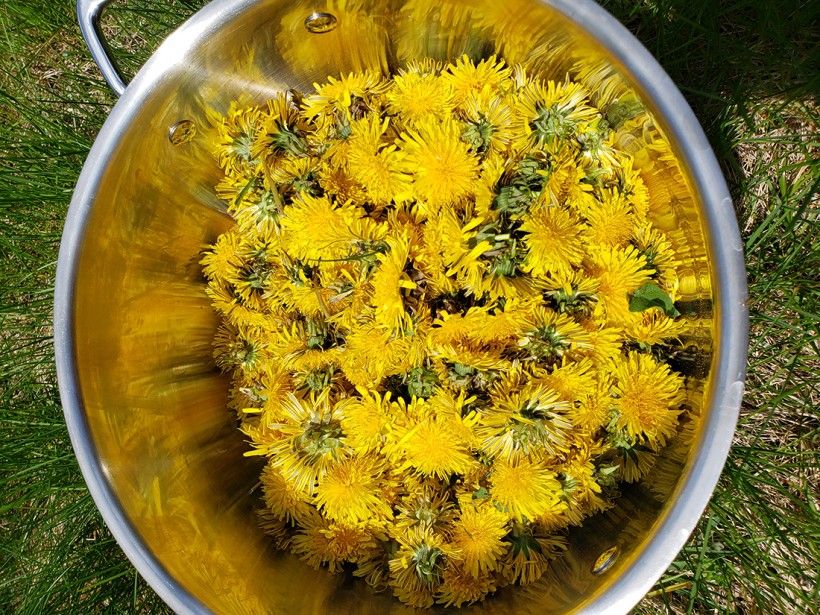
Get picking! Go outside and start collecting the dandelion heads. If you have kids around, request their help and this part should go rather quickly. Make sure you pick from a yard that has not been sprayed with any chemicals. After picking, you can choose to wash the dandelions. This step is optional. For those who are nervous about anything that could have previously touched the flowers, give them a good rinse and let them dry. Not squeamish? Skip this step and your dandelions will retain their pollen, which is said to give your syrup some extra health benefits and flavor.
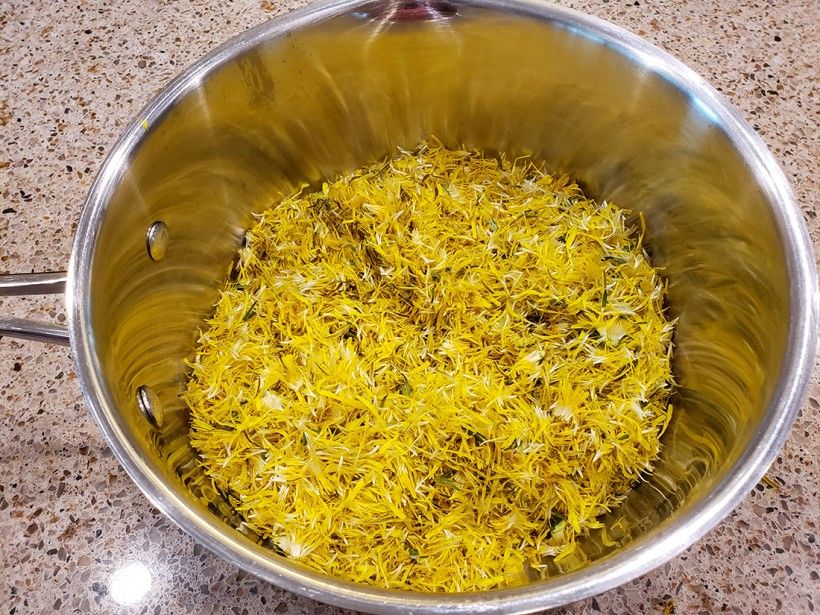
Separate the flowers from the greens. Carefully pick the dandelion petals from the green base. You will only be using the petals for this recipe as the greens will make the syrup bitter. Use gloves and kitchen shears if you don’t want to stain your hands.
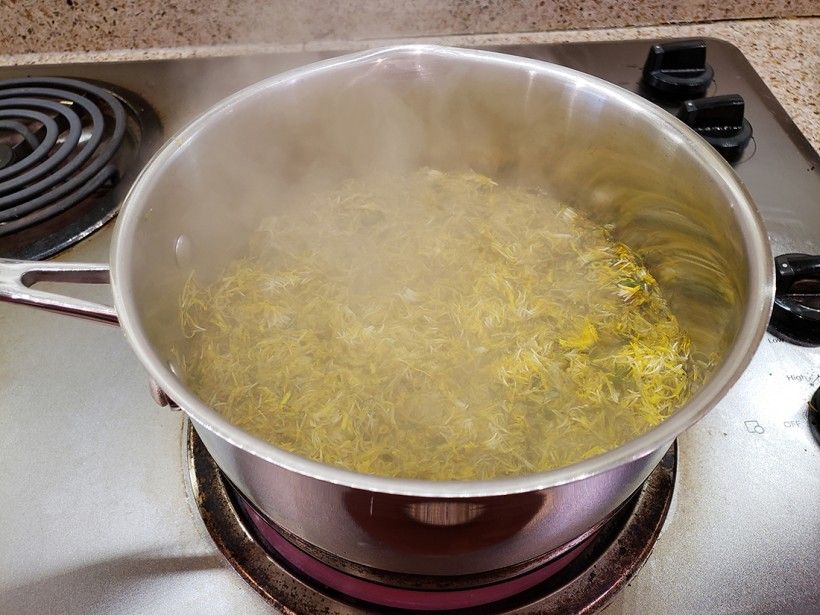
Cook the flowers. Add the flower petals to a pot and cover with filtered water until they are just covered. Bring to a rolling boil and let boil for one minute.
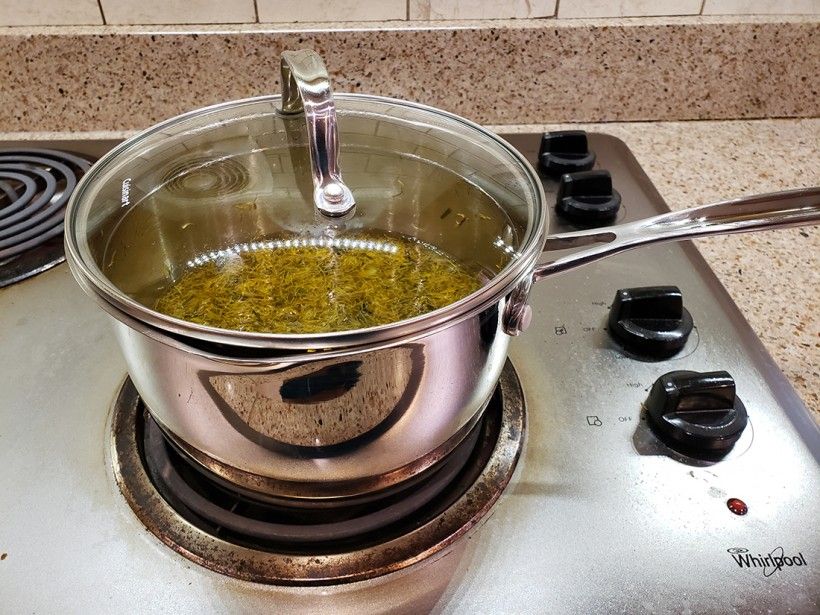
Cool. Remove the pot from the heat and allow it to cool. Once cooled, put a lid on the pot and refrigerate overnight to allow the flowers to continue steeping. This step should be done for a minimum of 8 hours and maximum of 24 hours.
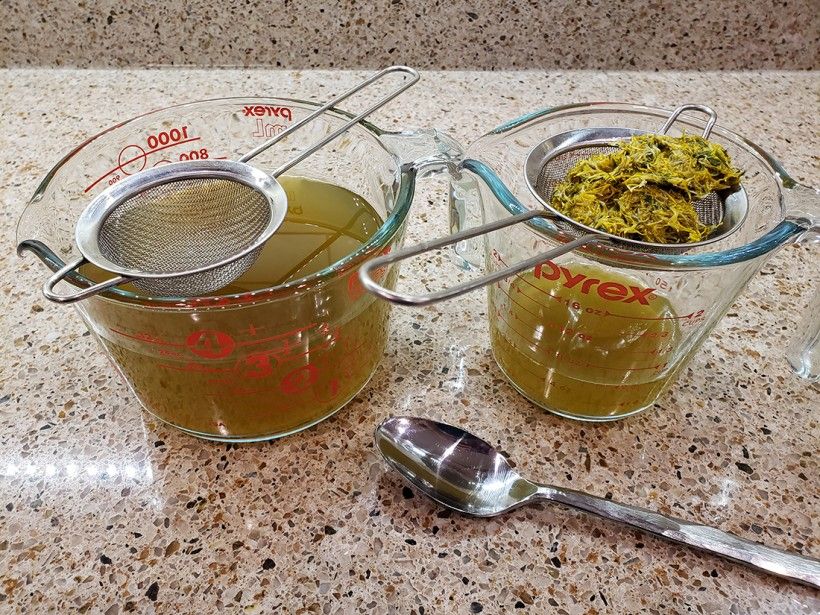
Press the flowers. The next day, use a cheese cloth or mesh strainer to strain the liquid from the flowers. Use a spoon to press the flowers and release any liquid. Discard the petals.
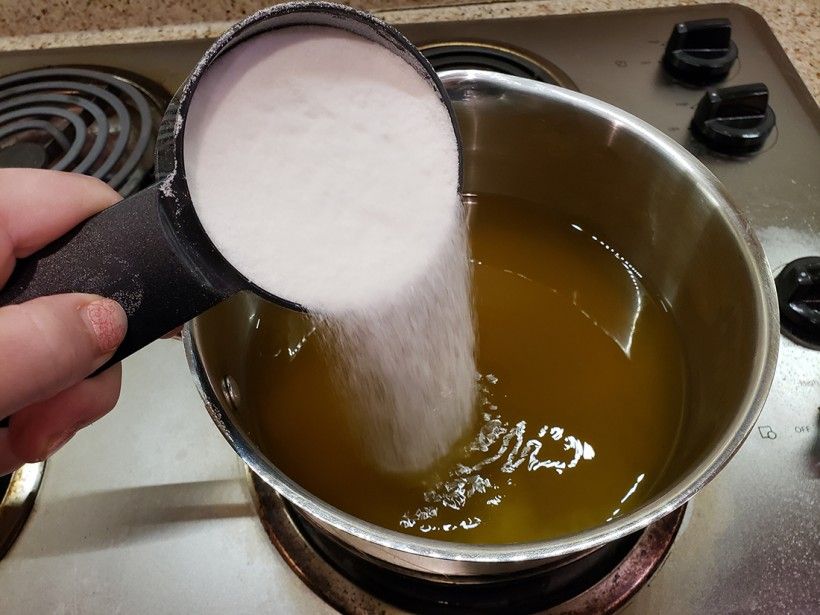
Measure the liquid. I like to do a 1-to-1 ratio for my syrups, so measure the liquid and then return it to a clean pot. Add 1 cup of sugar for every cup of liquid you measured.
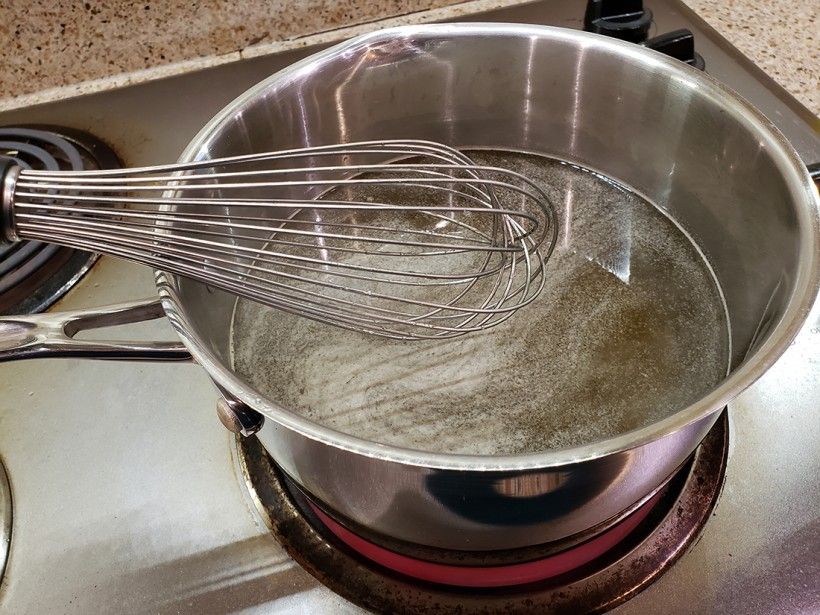
Cook. Simmer the liquid and sugar mixture for an hour, stirring occasionally. The goal for this step is to not only to dissolve the sugar but to reduce the amount of liquid by half.
Pro tip: For a touch of brightness, add some fresh lemon juice to the syrup as it cooks. Add it slowly and taste as you go until you reach a good flavor. I added ¼ of a squeezed lemon for 4 cups of liquid and 4 cups of sugar.
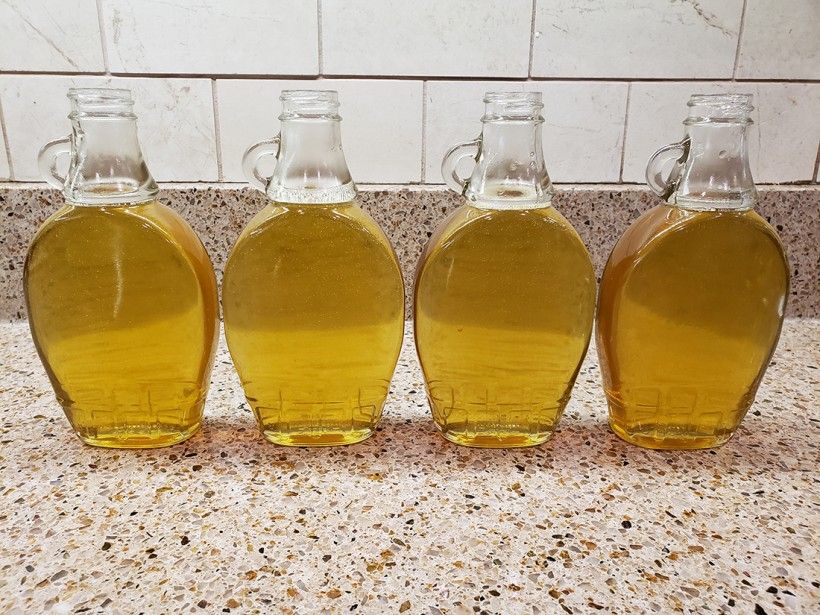
Cool. After an hour, allow the syrup to cool completely before bottling in clean glass jars or bottles. Store in the fridge for up to one month.
Enjoy your dandelion simple syrup in teas, coffee, cocktails, mocktails, and as a topper for waffles, pancakes, yogurt, or anywhere else you would use honey.